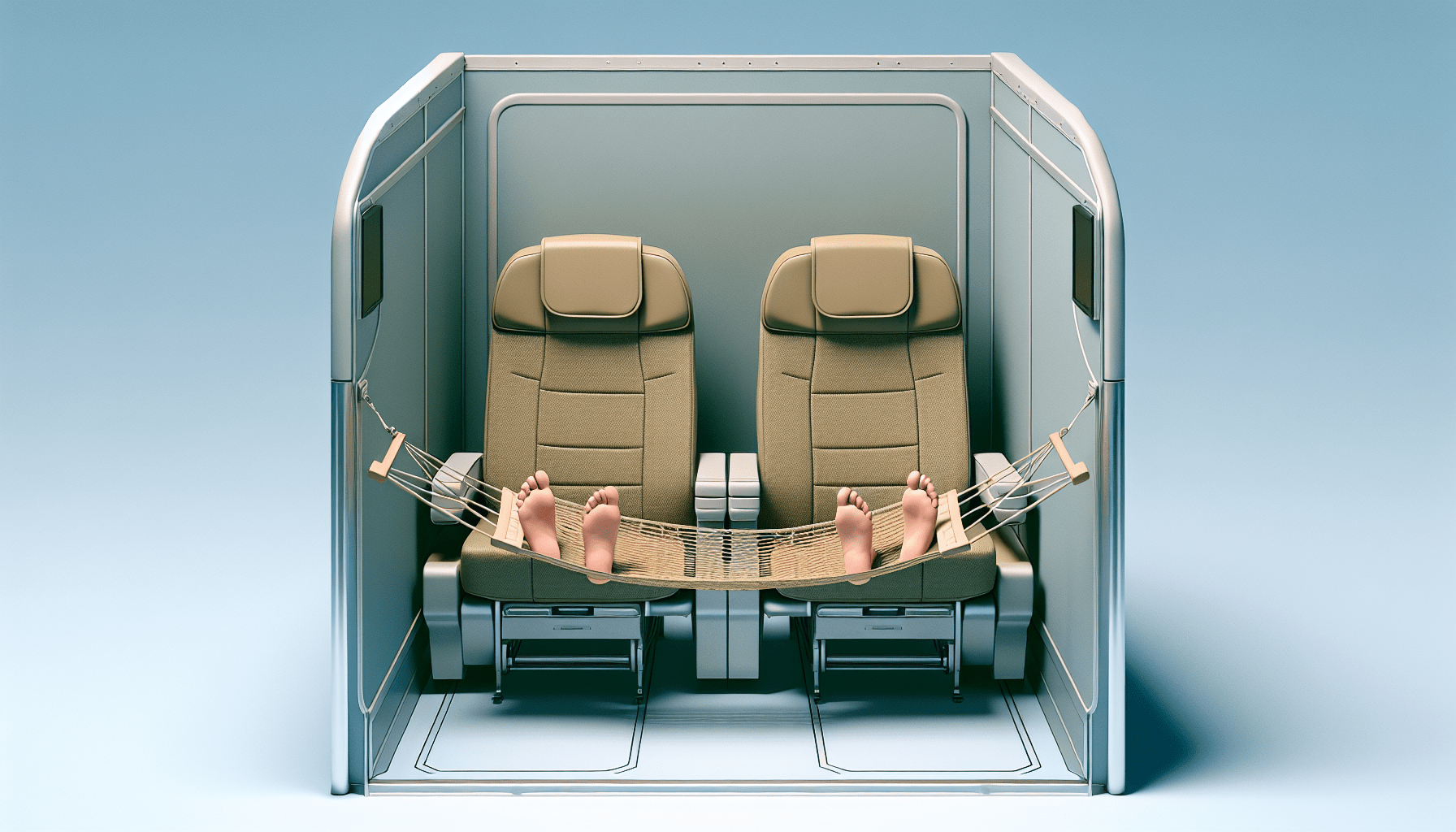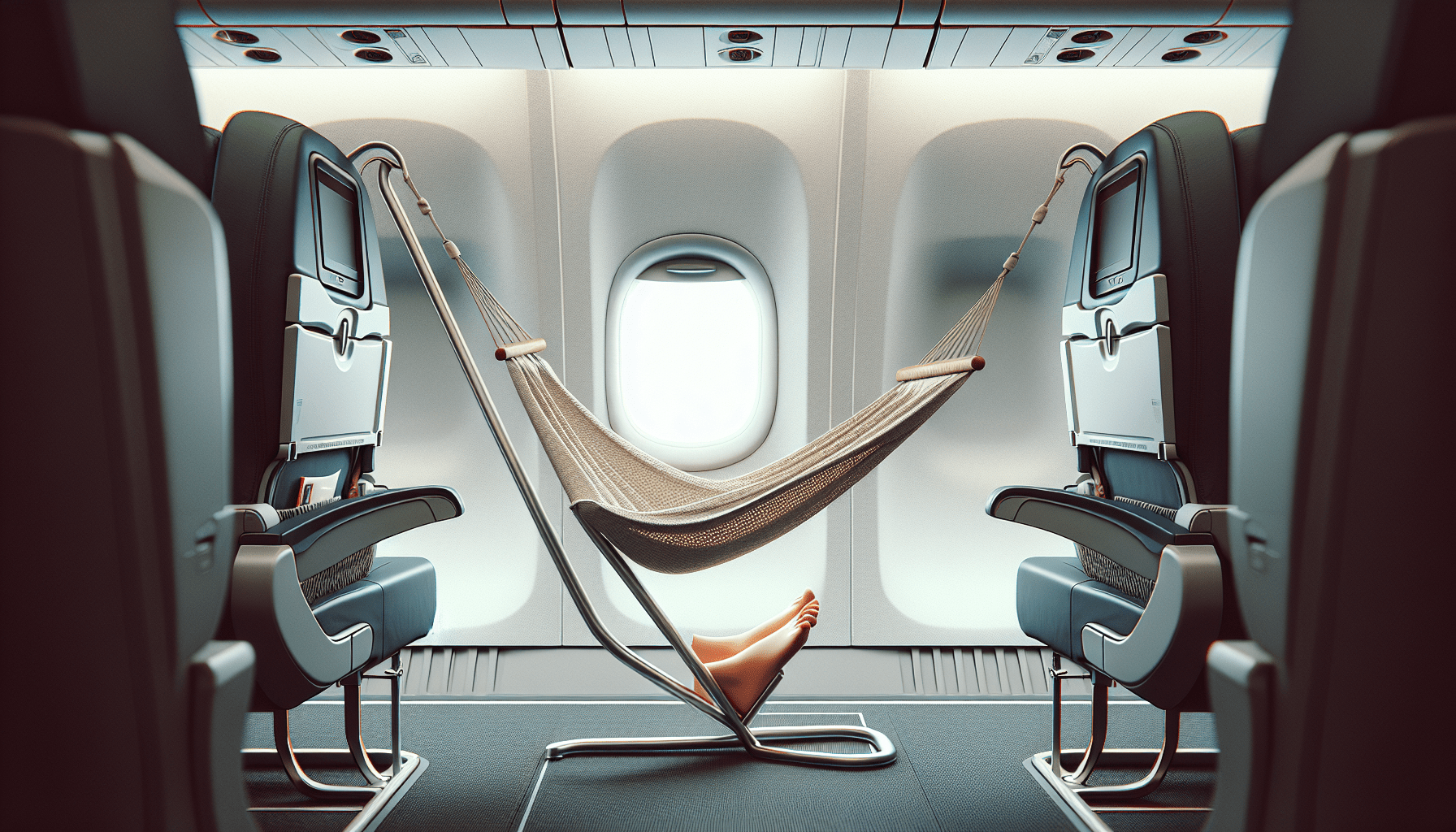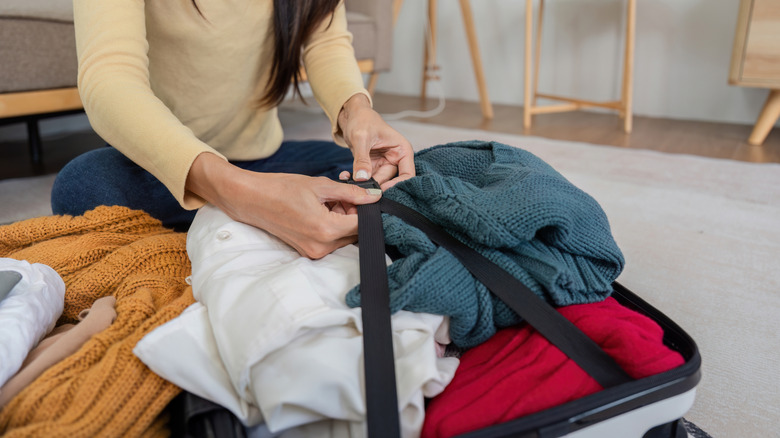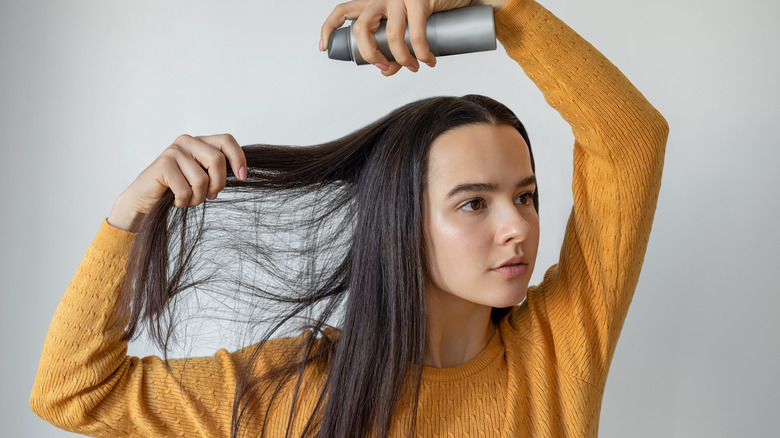6 Pack Luggage Tags for Cruise Ship Essentials for NCL, Princess, Carnival, Royal Caribbean and Celebrity Cruise Necessities by SEAVILIA
$5.00 (as of June 2, 2025 15:58 GMT +00:00 - More info)Have you ever thought about using a foot hammock on your next flight to make your journey more comfortable? While the idea might seem like a clever hack to improve your travel experience, you might want to reconsider. Foot hammocks promise relief for your legs and feet, but they come with a host of drawbacks that could outweigh the benefits. Let’s break down why avoiding a foot hammock could actually be in your best interest.

Shop These Accessories for a Comfortable Trip
What Is A Foot Hammock And How Does It Work?
First things first, what exactly is a foot hammock? It’s essentially a fabric sling that you attach to the tray table or seat in front of you, creating a comfortable little hammock for your feet. This can be a store-bought product or a DIY version made with a scarf or some other sturdy material. You might have also heard about inflatable footrests, which promise similar benefits but are, well, inflatable.
These foot hammocks and inflatable footrests are designed to elevate your feet, promoting better circulation and reducing the likelihood of developing issues like swollen ankles or blood clots during long flights. At first glance, it sounds like a win-win situation, doesn’t it? However, there is more than meets the eye.
Banned By Airlines
Changes to the Seat
Let’s start with one of the most compelling reasons to avoid using a foot hammock: it’s not allowed on many airlines. United Airlines has labeled them as “an alteration to the seat,” which is prohibited. They aren’t alone in this stance either; airlines like Qantas, Emirates, and British Airways have also banned these devices.
Safety Concerns
But why are airlines so against these seemingly harmless contraptions? Safety is a big concern. In an emergency situation, every second counts, and any obstruction can make evacuation more difficult and dangerous. Imagine trying to quickly exit the plane but tripping over someone’s inflatable footrest. Not ideal.

Shop These Accessories for a Comfortable Trip
Footrests Can Cause Problems For Other Passengers
Discomfort for Your Neighbors
From a safety standpoint alone, the case against foot hammocks is pretty strong, but let’s not forget about courtesy. If you’ve ever sat in an airplane, you know how tight the quarters are. When you attach a hammock to the seat in front of you, every little movement you make transmits as a jolt to the person seated there. They might not voice their irritation, but trust me, it’s annoying.
Blocking Reclining Seats
Inflatable footrests can also be a nuisance. Depending on their size and model, these gadgets might make it difficult for the person in front of you to recline their seat. Imagine your frustration if you couldn’t recline during a long-haul flight because someone behind you propped up their inflatable footrest. It’s enough to make anyone cranky.
Better Alternatives To Foot Hammocks
Use Your Carry-On Bag Or Backpack
So, if foot hammocks are out of the question, what are some other ways to make your flight more comfortable? One clever trick is to use your carry-on bag or backpack as an impromptu footrest. Place it under the seat in front of you and slide it out a bit to create a makeshift elevated surface for your feet. If you need more elevation, stuff the bag with a blanket or some clothes. When another passenger needs to get by, simply push it back under the seat.
| Pros | Cons |
|---|---|
| Easy to adjust | Limited elevation height |
| Doesn’t obstruct aisle | Might need to be readjusted |
| Multi-purpose |
Walking And Stretching
If you feel stiff or if your feet start tingling, taking a little stroll down the plane’s aisle or doing some light stretching can work wonders. Aim to move around every hour or so to promote circulation. A quick stretch near the galley can relieve tension, just be sure to follow the seatbelt sign and stay seated when required.
Seat Upgrades
While it’s not the cheapest option, upgrading your seat can significantly improve your comfort level. Many premium economy seats come with built-in, airline-approved footrests. These don’t usually cost much more than standard economy seats. If you’re looking for maximum comfort, business class or first class offers even more luxurious options, including lie-flat seats. While pricier, these upgrades are a great way to ensure you arrive at your destination feeling refreshed.
Why Proper Foot Elevation Is Important
Health Considerations
Elevating your feet during a flight isn’t just about comfort; it’s also about health. Keeping your feet down for extended periods can lead to swelling and, in extreme cases, blood clots. Elevating your feet helps improve circulation and can prevent these issues. Thus, finding a safe and acceptable way to prop up your feet is crucial.
Preventing Back Pain
Elevating your legs can also help alleviate back pain. When you sit for long periods with your feet flat on the floor, it can strain your lower back. Elevating your feet can redistribute the pressure and make for a more pleasant journey overall.
Etiquette And Respect For Fellow Passengers
The Golden Rule of Travel
Remember the golden rule of travel: treat others the way you want to be treated. Everyone is stuck in the same confined space, trying their best to make the journey as tolerable as possible. By sticking to travel hacks that don’t disrupt or annoy your fellow passengers, you make the trip more pleasant for everyone involved.
Communicating With The Cabin Crew
If you ever find yourself unsure about what is or isn’t allowed on a flight, don’t hesitate to ask the cabin crew. They’re there to help and can offer advice on comfortable yet acceptable ways to make your journey more enjoyable.
Comfort Tips That Don’t Compromise Safety
Bring A Travel Pillow
A good travel pillow can make a world of difference. Whether it’s an inflatable neck pillow or a cushy memory foam option, supporting your neck can make sleeping on a plane much easier.
Wear Compression Socks
Compression socks are fantastic for promoting circulation and preventing swelling. They come in a variety of styles, so you can find a pair that suits your needs and your outfit.
Pack A Cozy Blanket
Airplanes can get chilly, so bringing your own blanket can make the flight more comfortable. Many airlines provide blankets, but they’re often quite thin. Your own cozy blanket can make you feel more at home and help you stay warm.
Final Thoughts
Using a foot hammock on a flight may seem like a brilliant idea at first, but in reality, it can lead to a slew of problems. From safety concerns and potential bans by airlines to the irritation of fellow passengers, the downsides outweigh the benefits. Luckily, there are plenty of other ways to make your flight more comfortable that don’t involve breaking any rules or annoying your neighbors.
Before your next journey, consider trying out some of these alternatives. With a little creativity and consideration, you can make your flight enjoyable for both yourself and those around you. Safe travels!
Shop These Accessories for a Comfortable Trip






